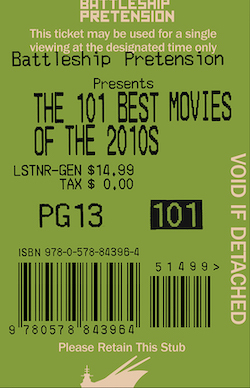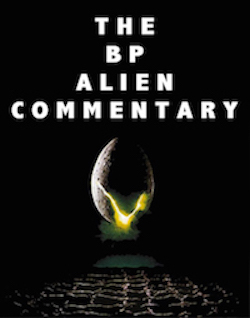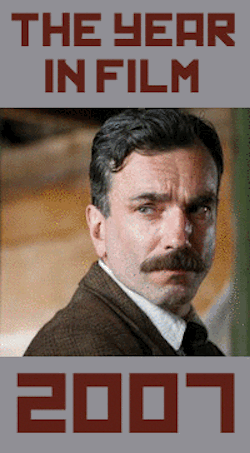Vote Yes, by David Bax
Too often, it is assumed that having a true story on which to base a film is justification enough to make it. However, not all true stories are created equal. Lucky for us, with No, director Pablo Larraín not only has a gripping and inherently cinematic real-life tale, he tells it in a nearly perfect way.
In 1988, after fifteen years of dictatorship, Chile’s Augusto Pinochet caved to international pressure and agreed to a vote, a referendum on whether he would leave office or serve another eight years. A Yes vote meant the status quo would persist; a No vote meant a bold step forward into an uncertain future but a future that might be free of the oppression, disappearances and torture marked by Pinochet’s reign. For 27 days leading up to the vote, each side would get fifteen minutes a night of television airtime to make their cases. Since the television networks were controlled by the state, this effectively meant that the Yes side would get 23 hours and 45 minutes while the No side would get the remainder of the day. Gael García Bernal plays René Saavedra, a commercial advertising hot shot hired to produce the No contingent’s nightly presentations.
In portraying a group of strange bedfellows banding together to win a vote that will change the course of a nation, No is reminiscent of no film more so than Steven Spielberg’s recent Lincoln. In both cases, the momentum comes from the straightforward illustration of the process while the action is no less satisfying for taking the form of people talking passionately in small rooms.
Just as Spielberg’s film rests finally on the work of Daniel Day-Lewis, No is entirely dependent on Bernal’s performance. He is more than up to the task. By subtly and precisely portraying a man who has longed disliked his country but has found some measure of complacency, he gives us both a fully realized individual and a sharp metaphor for the nation as a whole.
Larraín’s technical achievements are integral as well. In a 1.33:1 aspect ratio, he aims to recreate the feel of a television news broadcast. He doesn’t stop with the frame’s shape, though. He degrades the image – and at times even shoots on a vintage U-matic video camera – to match the look of the era. The result is oddly nostalgic but also serves a more practical purpose. It allows him to seamlessly integrate real footage from the time. I doubt most viewers could say for sure which images are old and which are new.
This enlivening approach is occasionally and disappointingly undercut by some rare but glaring instances of familiar and jarringly movie-like occurrences. Though it is likely true that those behind the No campaign were harassed by the state, the methods depicted (break-ins, threatening phone calls, mysterious men lurking in cars) come across as incongruously rote.
For each of those few predictable notes, though, Larraín provides many surprises. As in his other films, No possesses a singular and refreshing sense of humor. There are plentiful, understated verbal exchanges that are as naturalistic as they are hilarious. At the same time, there is a running gag about mimes that is so goofy as to be almost darkly comic in its contrast with the somber subject matter.
Alongside the lively Tony Manero (2008) and the meditatively bizarre Post-Mortem (2010), Larraín has crafted a loose trilogy about life in Chile during the Pinochet regime. No, with its triumphant humanism, is the perfect conclusion to the story while also being one of the decade’s best films in its own right.





























